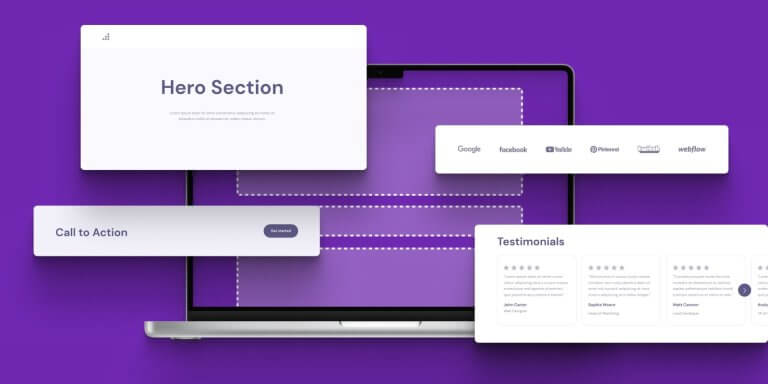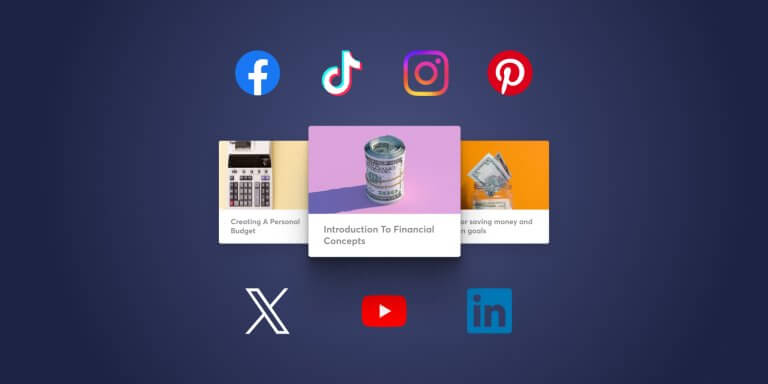Table of Contents
Coaches meet all sorts of people: confident, anxious, born leaders, aspiring leaders, determined, bold, shy… Some know what they want from their lives, and some are still trying to figure out what makes them happy.
Similarly, there are all sorts of coaches a client can bump into as they’re seeking a mentor to guide them through the path to improvement. They’ll meet those who’ll ask them to introspect and search deep into their feelings, and those who will want them to look ahead and focus on their goal.
Which category do you fall into? Are you the assertive or the no-nonsense coach? Do you put logic over emotion or vice versa?
If you are still trying to determine your coaching style, then you might want to take a look at the 15 popular coaching models we’ll explore with you today. Find out how each model works, what you need to consider before choosing the one for you, and the benefits for your coaching business.
Why you should use a coaching model
Are you a free spirit that doesn’t want to be confined by models and rules? Good—but that’s not a reason to snob tried-and-tested coaching models. Here’s why it’s a good idea to use a coaching model when you’re selling coaching online:
Add some structure to your coaching programs
Effective coaching models can elevate the quality of your services by adding structure and coherence to your program. As such, it will also help you appear (even more) professional and knowledgeable. Use the one that feels right for you to better organize the sequence of your coaching sessions and break the coaching program down into smaller steps.
Create a roadmap for your coaching clients
New clients will feel a lot more comfortable and safe when they know what’s ahead of them. They’ll know what to expect from each coaching session and how the whole process will unfold until they meet their goal. Let’s say your clients are college students struggling to make money while still in school. Guiding them on how to choose the best bank accounts for college students might be a good starting point.
During your first coaching call, explain the model you’re working with and what this entails. Apart from explaining your coaching model during your first session, you can also create a brief video to walk the client through it.
💡Keep reading: The 36 best training video software
Add a sense of accountability
With most coaching models, the client follows a clear path that you’ve both agreed on. This path includes milestones, upon which the client is expected to have performed a certain action.
When the client knows you’re working following a specific model, they feel more responsible to meet their goals within the timeframe you’ve set. This, of course, increases the chances of a successful coaching program.
Attract your ideal clients
Coaching is a scalable business. Using popular coaching models is one more way to grow your online coaching business. All you need to do is promote your coaching techniques as a part of your marketing strategy. Talk about the model you work with on the landing pages of your online school and on social media groups to get organic traffic and enable your target audience to discover you faster.
You’re new to coaching
New coaches need coaching models more than experienced ones. Even if you’ve received high-quality coaching training, it may take some time before you fully evolve your coaching skills and reach your top game. Until you find your personal coaching style, a coaching model will help you work more strategically.
15 coaching models and how they work
Let’s see the most popular coaching models to choose from, and what it looks like working with them. These models work for any type of coaching or mentoring and are effective for private coaching and group coaching as well.
#1 GROW coaching model
GROW is the most popular coaching model and has been around for more than thirty years. Created by Sir John Whitmore and colleagues, it stands out for its simple and straightforward structure.
The GROW model for coaching assumes that the coach is not necessarily an expert in the client’s situation. Consequently, the coach acts more like a facilitator who helps the client come up with ways they can achieve their goals.
Let’s see what GROW stands for.
G-Goals: Discuss with your client what they want to achieve to establish the goal of the coaching sessions. It helps to set a SMART goal (Specific, Measurable, Attainable, Realistic, and Time-bound) to make sure it’s evident when the client has reached it.
Even if it’s not possible to have all the components of a SMART goal (for example, you can’t always measure a behavioral change), it’s good to include as many as you can.
R-Reality: Next, you need to discuss where the client stands now. What is their current situation? How far are they from reaching their goal? What steps have they already taken towards their goal, and what results have these steps brought?
It’s essential to fully understand the current reality and examine disabling and enabling factors before you can start working on a plan for the future.
O-Obstacles/Options: You also have to factor in potential roadblocks (obstacles) that will come along the way. Prompt the client to think about solutions (options) to overcome them. You can brainstorm with them and share a couple of ideas of your own. When exploring the options, remember to consider the advantages and disadvantages of each one.
W-Way forward: The last step in the process is the way forward, or establishing the will. The client should now commit to taking the necessary steps to achieve their goal. At this final stage, measure the level of commitment of the client. You can do this with a simple “On a scale from 1 to 10” question.
Whatever is stopping them from being fully committed is an obstacle you failed to identify in the previous step, so you need to figure out ways to overcome these remaining roadblocks. Finally, make sure to schedule regular meetings to keep the coachee motivated and to check on their progress.
GROW model example
To better understand how this works in practice, let’s look at a GROW model example from a career coaching session. A mid-level marketing manager feels ready to move into a leadership role but isn’t sure how to position themselves for promotion.
Goals: The coach and client agree that the primary objective is to secure a team leader position within the next 12 months. Together, they refine this into a SMART goal: “Become a team leader in the digital marketing department by the next annual promotion cycle.” This gives the client a clear target and timeframe.
Reality: The coach asks open-ended questions to explore the current situation. The client has strong technical skills but little leadership experience. They have managed small projects but haven’t led a full team. This stage reveals both strengths (industry expertise, strong communication skills) and gaps (formal leadership experience, visibility with senior management).
Obstacles/Options: They identify potential roadblocks, such as a lack of leadership opportunities in the current role. The coach and client brainstorm ways to address these—volunteering to lead cross-department projects, mentoring new hires, and seeking stretch assignments. Each option is assessed for feasibility and potential impact.
Way forward: The client commits to proposing a new cross-team initiative within the next month, scheduling bi-weekly check-ins with the coach to track progress. They also agree to seek feedback from their current manager to build leadership credibility.
This GROW model example demonstrates how the structure turns a general ambition (“I want to get promoted”) into an actionable plan with clear next steps.
#2 CLEAR coaching model
CLEAR is a coaching model similar to GROW, developed by Peter Hawkins in the early 80s. It’s very popular in leadership coaching and executive coaching. What sets it apart from other coaching models is that it aims to bring about deep changes and is not merely goal-focused.
It also focuses on helping the client make an emotional connection with the change that’s about to take place by prompting them to imagine how they’ll feel once they’ve reached their goal.
CLEAR stands for:
C-Contract: In your first session, set the ground rules of your collaboration. This includes all the formalities, like the meeting frequency and duration of each session, and also the end goal of the program. At the beginning of each session, you should ask the client what they want to discuss and where they would like to focus on.
L-Listen: Next, ask the client questions relevant to the session’s desired goal and listen to what the client has to say. The client should monopolize the conversation, freely sharing their thoughts and feelings. The role of the coach at this stage is to initiate the conversation and guide it with open-ended questions. The coach needs to practice active listening, with no judgment.
E-Explore: Encourage the client to further analyze their current situation and their emotions. This will help the client realize how the situation they’re in is truly affecting them and start considering their options to get out of it.
A-Action: Help the client decide on a set of steps that will bring them closer to their desired situation. Ask them to imagine their feelings while they’re in the process of realizing these steps. At this point, it’s good to push for some accountability. When are they going to start working on their goal, and how?
R-Review: Before wrapping up your session, ask the client if they feel that the session has successfully met its goals. Go over the key points you’ve discussed and the progress you’ve made, as well as the action the client has promised to take.
CLEAR coaching model pros and cons
When weighing the CLEAR coaching model pros and cons, consider your coaching style, the client’s preferences, and the desired pace of progress. We built this table to help you out:
#3 STEPPPA
The STEPPPA model was created by coach Dr. Angus McLeod. STEPPPA recognizes that emotions play a significant role in attaining goals and uses them to motivate the coachee to act toward their goal.
STEPPPA stands for:
S-Subject: Identify the subject of the coaching sessions. It’s not the time to identify the goal yet – you only want to get an idea of where the issue lies and what you’re trying to work on. The client needs to provide you with context so that you’re fully aware of their current situation and how they feel about it.
T-Target: Define the target, i.e., the goal of the coaching. It’s your job as a coach to determine whether the desired goal is realistic. If the client has no specific goal in mind, you need to help them set one. If the goal is not realistic, consider other options available.
E-Emotions: Analyze the emotions involved. Negative emotions will not work in favor of achieving the desired goals. It’s essential to steer the client toward positive emotions and figure out ways to ignite their motivation.
P-Perception: At this stage, ask questions that will help the client view the subject and the target from a wider perspective. Help them see how their goal fits into their life and how it may affect others, too.
P-Plan: Discuss a plan to reach the goal, considering again whether both the goal and the plan are feasible. The steps of the plan should be clearly laid out and easy to follow. The client shouldn’t have to make unforeseen choices along the way, so they can focus on the road ahead.
P-Pace: Set a timeline for the plan and break it into milestones. Breaking the plan into milestones practically means setting smaller goals. Small goals are easy to reach and can therefore keep the client motivated and focused.
A-Action/Adapt: At this point, review the plan to decide whether it’s doable. Make sure the client is happy with it and eager to follow suit. Make any changes necessary before the client commits to taking action.
#4 OSCAR
The award-winning OSCAR model was created in 2002 by Andrew Gilbert and Karen Whittleworth to help leaders adopt a coaching style for training their teams. It focuses more on the solution and less on the problem.
Let’s meet OSCAR:
O-Outcome: The first step is to focus on the client and the goal they want to reach.
S-Situation: Next, you need to help the client evaluate and realize their current situation, as well as their skills and abilities. You should also address the client’s current feelings.
C-Choices: Next, see how the client can get closer to their SMART goals. Explore the alternatives, weighing the pros and cons.
A-Action: Create a plan of action. The plan should be challenging enough but not too difficult to stick to.
R-Review: Schedule regular check-ins with the client to review their progress and make sure they stick to the action plan.
#5 OSKAR coaching model
OSKAR is another goal-focused model developed by Paul Z Jackson and Mark McKergow.
Let’s meet OSCAR’s (not so) evil twin, OSKAR:
O-Outcome: What does your client want to achieve from the session and in the long run? What is their ideal scenario?
S-Scaling: Next, ask the client where they are in relation to their goal, using a scale from 1 to 10. Remind the client that they don’t always need to reach 10; instead, they should be honest about how far they can go.
K-Know-how: This step is closely related to the previous one. Now the client must think deeply and honestly about their skills, traits, and other factors that will help them achieve their goals. They should also consider people and resources that can assist them in that.
A-Affirm and Action: At this point, you need to reiterate and confirm what the client has come up with. Show the client you trust their abilities and pinpoint the things they’ve been doing well so far. Next, help them choose how they will move forward.
R-Review: In this model, the review takes place at the beginning of the following session, and it aims to reflect on the steps the client has taken and evaluate the results.
#6 CIGAR
Another coaching model similar to GROW, the CIGAR coaching model stands out as it’s the only model that focuses on reality vs possibility. It was developed in 2003 by Suzy Green and Anthony Grant.
This is what to expect when trying CIGAR:
C-Current reality: In the first step, you clarify the current situation/reality of your client. By doing so, you will also spot the “problem,” something in this reality that is not quite what they wanted.
I-Ideal: Next, you ask your client to imagine themselves living in their ideal reality. This is different from asking them to say what their ideal reality is. What you’re looking for is not “I want to be a successful team leader. ” Instead, you want them to paint a picture. They should say something like “I am a successful team leader. I walk into the office every day feeling proud of my team and eager to take on new challenges.”
G-Gaps: What’s keeping your client from their ideal reality? Why are they not the successful team leader they want to be? Help them identify the gaps they need to overcome to make their ideal reality…a reality.
A-Action: Decide on the best course of action to remove the gaps and bring the client closer to their ideal reality. The client should commit to taking specific steps and reaching small goals.
R- Review: After the client has taken action, get together to evaluate the results. How have their actions contributed to their plan?
#7 FUEL coaching model
The FUEL coaching model is a practical model developed by John Zenger and Kathleen Stinnett. It’s popular in leadership development and workplace coaching because it creates focused, action-oriented conversations.
FUEL stands for:
F-Frame the conversation: Set the purpose of the session and agree on the desired outcome.
U-Understand the current state: Explore the coachee’s present situation, challenges, and perceptions.
E-Explore the desired state: Identify what success looks like and why it matters.
L-Lay out a plan: Collaboratively create a plan with specific steps, responsibilities, and deadlines.
FUEL is often chosen over other coaching methods for its clarity and suitability for short, targeted sessions.
#8 Peer coaching model
Peer coaching is a collaborative approach where individuals at a similar level coach each other. This type of coach modeling builds trust, promotes shared learning, and supports ongoing development without a strict hierarchy.
This model’s steps include:
Peer coaching is a cost-effective method that works well in organizations aiming to create a culture of continuous improvement.
#9 ACHIEVE
The ACHIEVE model, created by Dr. Sabine Dembkowski and Fiona Eldridge, is one of the popular coaching models used in corporate and leadership contexts. It offers a structured yet flexible process for setting and reaching goals.
ACHIEVE stands for:
A-Assess the current situation: Build a clear picture of where the client stands now. Gather recent results, feedback, constraints, and resources, and surface strengths and gaps. The outcome is a shared baseline that both coach and client agree on.
C-Creative brainstorming: Generate many ways forward without judging ideas yet. Use prompts, mind maps, or quick sprints to widen options, and invite input from relevant stakeholders where useful. Capture every idea so you can sort them later.
H-Hone goals: Turn broad aims into specific targets. Define success criteria, timelines, and measures, and check alignment with personal values and organizational priorities. Document 1–3 clear goals that will guide decisions.
I-Initiate options: Translate goals into practical routes. Outline what each option would require—skills, budget, tools, and support—and note quick wins that build early confidence. Create a shortlist of realistic choices.
E-Evaluate options: Compare choices using simple criteria such as impact, effort, risk, and dependencies. Stress‑test assumptions and consider potential obstacles. Select the preferred route and record why it’s the best fit.
V-Valid action programme: Convert the chosen route into a concrete plan. Set milestones, owners, and dates; define the first small step; and agree how progress will be tracked. Schedule check‑ins and decide how support and feedback will work.
E-Encourage momentum: Keep the plan moving. Review progress regularly, remove blockers, adjust actions if needed, and acknowledge wins to sustain motivation. Use a consistent cadence (eg, bi‑weekly) and a simple dashboard to maintain accountability.
#10 WOOP
WOOP, developed by psychologist Gabriele Oettingen, is a simple coaching approach based on behavior change research. It’s highly effective for personal development, habit change, and even self-coaching.
W – Wish: Identify a realistic, meaningful goal.
O – Outcome: Visualize the benefits of achieving it.
O – Obstacle: Identify internal barriers.
P – Plan: Create a clear “if-then” plan to overcome obstacles.
WOOP works across different coaching methods and can be integrated into longer-term coach models like GROW or TGROW.
#11 TGROW
TGROW is a variation of the GROW model for coaching that adds an initial step—Topic—to set the theme. In this step, you begin by agreeing on the area of conversation, setting boundaries so the session stays on track. For example, a client might want to focus on leadership skills, time management, or preparing for a career change.
TGROW is widely used in business coaching and online coaching business models where session time is limited and focus is critical.
#12 FAIR
The FAIR coaching model is designed to guide constructive performance conversations and feedback sessions. It’s often used in leadership, workplace coaching, and sales coaching models where the aim is to address performance issues while preserving trust and respect.
FAIR stands for:
Facts: Start with objective, verifiable information about the situation. Avoid opinions or assumptions, and stick to clear examples. This ensures the conversation is grounded in reality.
Affect: Explain the impact of the facts on the team, project, or individual. This could include effects on productivity, morale, deadlines, or customer satisfaction.
Interests: Explore the underlying needs, motivations, and concerns of everyone involved. Understanding these helps reveal why certain behaviors occur and how to address them effectively.
Requests: Conclude with clear, actionable next steps. Agree on what will be done, by whom, and by when, so accountability is built into the process.
Because it balances objectivity with empathy, the FAIR model works well for managers, coaches, and team leaders who want to improve performance without damaging relationships. It can be applied as a standalone coaching method or combined with other coaching techniques to create a more comprehensive development plan.
#13 Action-centered leadership model
Developed by John Adair, this coaching model focuses on balancing three core leadership areas:
This model is often applied in leadership training as part of executive coaching models, helping leaders stay effective in diverse situations.
#14 AOR
The AOR model (Activity, Objective, Result) is a straightforward way to measure and improve performance.
A – Activity: Identify what’s currently being done.
O – Objective: Clarify the target or goal.
R – Result: Compare the outcome to the goal.
AOR is a practical choice for both sales coaching models and short-term development plans where results need to be tracked closely.
#15 SCARF model
The SCARF model, developed by Dr. David Rock, explains five key social factors that influence how people behave and respond to change. It’s widely used in leadership development, executive coaching models, and team coaching to reduce resistance, improve communication, and build stronger working relationships.
SCARF stands for:
Status: How important we feel in relation to others. A perceived loss of status can trigger defensiveness, while recognition can boost motivation and engagement. Coaches can help clients maintain or improve their status through acknowledgment and role clarity.
Certainty: Our need to predict what will happen next. Uncertainty can cause stress and slow decision-making. A coach using the SCARF model might work with clients to create clearer communication channels and set well-defined expectations.
Autonomy: The sense of control over one’s actions. Lack of autonomy can lead to disengagement, while increased choice and decision-making power can drive performance. This step often involves identifying areas where the client can take ownership.
Relatedness: The degree of trust and connection with others. Feeling excluded or disconnected can harm collaboration. Coaches may use activities or strategies to strengthen team relationships and foster inclusion.
Fairness: The perception that decisions and outcomes are equitable. When fairness is lacking, trust erodes quickly. Coaches can help by guiding transparent decision-making and open dialogue.
The SCARF coaching model is often applied alongside others—such as GROW or CLEAR—to address both task-focused goals and the social dynamics that influence whether those goals are achieved.
Coaching wheels
A coaching wheel (also known as “wheel of life”) is a versatile and effective self-assessment tool you can use during your first coaching session to measure and document the client’s satisfaction with the most important areas in their lives. These usually include family, emotional well-being, finances, work/life balance, etc.
Using a coaching wheel, you will be able to:
Here’s how it works:
Don’t hesitate to use the wheel of life even if it doesn’t seem relevant to your niche. Getting a round view of your client’s life will help you uncover hidden roadblocks or driving forces, both of which play a pivotal role in personal and professional development.
What you should consider when choosing coaching methods
Now, it’s time to ask a few questions of yourself before you choose a coaching model.
What’s your coaching niche?
The type of coaching you provide plays a significant role in determining the coaching model you’ll follow. In life coaching, for example, which promotes personal development, the client’s feelings and thoughts are a priority. Therefore, you need to choose a model that focuses on emotions, like STEPPPA.
This model is also a good match for fitness and health coaching. For career coaching, a model with a hands-on and dynamic approach would be more effective. You can go with GROW, CIGAR, or something more aggressive like OSCAR.
What is your personal philosophy?
You need to find the coaching approach that matches your own personality and beliefs. To inspire trust in your client, you need to believe in what you’re doing and be yourself. For example, if you’re a firm believer in positive reinforcement, working with OSKAR will come naturally to you.
What does your client prefer?
Your client’s personality and needs should also be a factor in your decision. Although you’re the one leading the process, you can’t ignore your client’s preferences either. All the coaching methodologies we’ve seen today suggest scheduling frequent meetings for review, which includes asking whether the whole way the coaching program has been structured is working for the client.
If at any point the client expresses dissatisfaction with the results, don’t hesitate to revisit your approach and focus on what the client needs most.
Do you need a coaching model at all?
At the end of the day, it’s not necessary to follow a coaching model. Experienced coaches often have developed their own coaching style and know how to get their clients where they want to be without following a predefined process.
4 final takeaways about coaching methodologies
No matter which coaching models you decide to go with, remember these four key takeaways:
Following these practices will help you successfully guide your clients on their journey to become a better version of themselves and reach their goals.
Build an online course to apply your new coaching techniques with LearnWorlds
By building an online course with LearnWorlds to complement your coaching program, you’ll be able to offer integrated coaching packages to your clients that will set you apart.
Create ebooks, host webinars, and share podcasts and videos; schedule online meetings that don’t disrupt your client’s program via Zoom or Webex. You can even build a mobile app where your clients will access all these amazing resources on the go.
Are you ready to offer your clients the best coaching platform experience?
Start your free 30-day trial now and see firsthand why LearnWorlds is a true all-in-one learning platform for coaches.

Androniki Koumadoraki
Androniki is a Content Writer at LearnWorlds sharing Instructional Design and marketing tips. With solid experience in B2B writing and technical translation, she is passionate about learning and spreading knowledge. She is also an aspiring yogi, a book nerd, and a talented transponster.
Kyriaki is the SEO Content Manager at LearnWorlds, where she writes and edits content about marketing and e-learning, helping course creators build, market, and sell successful online courses. With a degree in Career Guidance and a solid background in education management and career development, she combines strategic insight with a passion for lifelong learning. Outside of work, she enjoys expressing her creativity through music.





